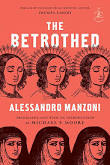The Burning Air, by Eugene Mirabelli
a review by Rich Horton
Eugene Mirabelli was born in Massachusetts in 1931 -- same state, a month earlier than my father. He became a professor of literture, and wrote his thesis on Faulkner, and taught for a few years. His first novel, The Burning Air, was published in 1959, and a few more followed. He married Margaret Black in 1959, and they had three children, and Gene published three novels. She worked as an editor, and after Gene stopped teaching he worked for a left wing weekly, and returned to academia later. More novels such as The Language Nobody Speaks (reviewed here) and The Goddess in Love with a Horse followed. Margaret died suddenly in 2010, and Renato the Painter was published soon afterwards. In 2003 he had published a very fine story in F&SF, "The Only Known Jump Across Time", and several other SF and Fantasy stories followed, in F&SF, Asimov's, and Not One of Us. (I reprinted three of these stories, in my Best of the Year volumes and in Lightspeed.) Gene is still alive at 92.I think his SF/F stories from the decade between 2003 and 2013 are remarkable and deserve a collection. I decided to explore his non-SF work a few years ago, and I read The Language Nobody Speaks (1999), an erotically charged and quite effective book, reviewed here. Just a couple of months ago I saw a post about the paperback edition of The Burning Air, which, not unusually for paperbacks in that era, emphasized the erotic aspects of the novel (which are present, but hardly in a sleazy way.) (The cover, which is really not sleazy at all, is by the great Robert McGinnis, and it's fairly faithful to the novel except giving Giulia blond hair.) I looked for a copy to try, and bought the first edition, and I've finally read it.It's a short novel, just under 40,000 words. It's told by a young man named George, who is visiting his girlfriend Giulia Molla's parents for the first time, with the intention of getting their approval for the couple to marry. But the novel's first sentence tells us how it's going to end: "The last time I saw Guilia was at the train station in Bayfield." The rest of the book tells the story of a seemingly rather nice weekend, but over it all hangs a sort of dread as the reader knows that George and Guilia's relationship is doomed.
Both young people are Italian-Americans, nominally Catholic, well-educated. There may be hints to fissures early in some of that -- does George's name as opposed to Giulia's hint his family is more assimilated? (After all Giulia's grandmother insists on calling him Giorgio -- but also, Giulia's teenaged brother is named Michael. And, we learn eventually, the Molla's have been in the US much longer than George's family.) George may have been raised Catholic, but he never goes to Mass, and indeed Giulia conspires to skip Mass this weekend. As for education, George is working as a free-lance journalist, but vows to get a teaching job if his finances remain vulnerable; while Giulia has a chance for a graduate fellowship in Italy, which her mother desperately wants her to attend. But there are other issues -- the couple have been dating for about three years, but for a period they had broken up, and Giulia had had another boyfriend, of whom George is very jealous. They are sleeping together -- and they take the chance to make love a couple of times over the weekend -- but it's clear they feel a bit guilty about doing this knowing that Giulia's mother and grandmother, at least, are very opposed to premarital sex.
The weekend involves some awkward conversations between George and the rest of Giulia's family -- as he helps her father do yard work (and fixes the lawnmower), as he washes some dishes, goes to the beach with Giulia and Michael, visits with married friends of Giulia, shares a big family dinner, and as the two tell Mr and Mrs Molla of their plans to marry. Mr Molla gives his approval though Mrs Molla is clearly against it. But Giulia and George are determined, almost to the point of eloping. And in the end -- which is ambiguous in a sense but clearly a true end as the first sentence indicates -- it seems that the real problem is with George himself.
This is a fine first novel, though I'd say clearly a first novel, and not wholly successful. The structure is elegant, but the long middle does drag just a bit, though the events portrayed are all important. The conclusion is strong and moving, as George seems to ultimately shy away from trusting himself. This isn't by any means Mirabelli's best work, but it's a good debut that presaged a strong and varied career -- though I'm not sure Mirabelli's novels ever had broad commercial success.








